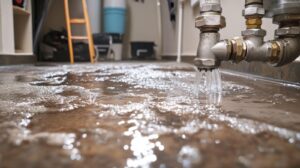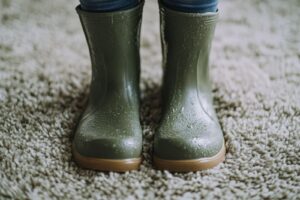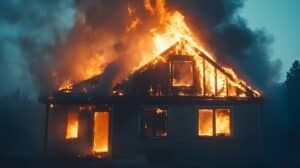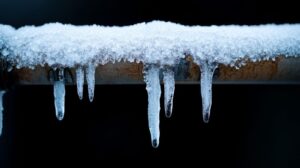Flood restoration and flood damage cleanup entail various important steps and processes. If you’re dealing with flood damage in Utah, it’s essential to understand what to expect during the restoration process. This article will provide a detailed overview of Utah flood restoration, covering everything you need to know.
When it comes to flood restoration, the general process remains similar regardless of the state you’re in. However, regarding flood restoration in Utah, there are several local considerations to keep in mind. Utah will likely have numerous professional flood restoration companies specializing in water damage restoration and flood recovery. These companies possess the necessary expertise, state-of-the-art equipment, and extensive experience in assessing and restoring properties affected by floods.
Now for the good stuff. Here is a list of everything you need to know about flood restoration:
- Prompt Response: Acting quickly is crucial in flood restoration to mitigate further damage. Within 24-48 hours, contact a professional restoration company to assess the situation and begin the restoration process promptly. Delaying restoration can lead to increased damage and higher costs.
- Safety First: Ensure the safety of yourself and others before entering a flooded area. Turn off electricity and gas supplies to avoid potential hazards. Wear appropriate protective gear, such as gloves, boots, and masks, to minimize contact with contaminated water, chemicals, or mold.
- Water Extraction: Flood restoration involves removing standing water from the affected property. Professionals utilize equipment such as submersible pumps, wet vacuums, and industrial-grade water extractors to remove water efficiently. The goal is to extract water from all affected areas, including carpets, flooring, walls, and furniture.
- Structural Assessment: A thorough inspection is conducted to assess the extent of structural damage caused by the flood. Restoration professionals evaluate the foundation, walls, floors, and ceilings to identify structural weaknesses or compromises. This assessment helps determine the necessary repairs and ensures the safety and stability of the building.
- Drying Techniques: After water extraction, the property must be thoroughly dried to prevent mold growth and further damage. Restoration experts employ techniques such as dehumidifiers, air movers, and specialized drying equipment. This process removes excess moisture from the air and affected materials, promoting effective drying.
- Mold Remediation: Floods create an ideal environment for mold growth. Trained professionals assess the extent of mold contamination through visual inspections and may conduct air quality testing. If mold is detected, they employ specialized techniques to remove mold and prevent its recurrence, including containment, air filtration, and the use of antimicrobial treatments.
- Damage Documentation: Detailed documentation of flood damage is crucial for insurance purposes. Restoration professionals will photograph and document all affected areas and belongings, noting the extent of the damage. This documentation assists with the insurance claim process and ensures a comprehensive record of the restoration work.
- Contents Restoration: Floods can damage personal belongings like furniture, appliances, and sentimental items. Restoration companies often provide content cleaning and restoration services to salvage as many items as possible and minimize losses. This process may involve cleaning, drying, deodorizing, and specialized treatments for various belongings.
- Salvageable vs. Irreparable Items: Restoration experts will assess which items can be restored and which are beyond repair. Salvageable items are cleaned, dried, and restored using appropriate techniques and equipment. Irreparable items may need replacement, and the restoration company can assist in documenting these losses for insurance purposes.
- Odor Removal: Floodwaters can leave behind unpleasant odors in the affected area. Restoration professionals employ deodorizing agents, ozone treatments, thermal fogging, or air scrubbers to eliminate odors and improve indoor air quality. These methods target the source of the odor and neutralize it effectively.
- Structural Repairs: Flood damage can compromise the structural integrity of a property. Skilled restoration teams assess and repair damaged walls, floors, ceilings, and other structural elements to restore the property to its pre-flood condition. This may involve repairing or replacing damaged drywall, flooring, or structural supports.
- Electrical System Evaluation: Floodwaters pose electrical hazards. Restoration experts assess the electrical system for damage and safety issues before restoring power to the property. They may inspect electrical panels, wiring, outlets, and appliances to ensure they are safe and in good condition. Repairs or replacements are made as necessary.
- Plumbing System Inspection: Flooding can also affect the plumbing system. Professionals inspect and repair damaged pipes, drains, and fixtures to restore proper functionality and prevent water-related issues. Leaks, clogs, or sewer backups caused by the flood are addressed to ensure a fully functioning plumbing system.
- Insurance Coverage: Review your insurance policy to understand flood damage and restoration coverage. Flood damage may require separate coverage, so consult with your insurance provider to ensure you are adequately protected. Notify your insurance company promptly and document the damage to support your claim.
- Professional Expertise: Hiring a reputable Utah flood restoration company ensures that trained professionals with experience in handling water damage are managing the restoration process. They possess the necessary expertise, knowledge, and equipment to handle the complexities of flood restoration. Working with professionals provides reassurance and peace of mind during the restoration journey.
- Preventing Secondary Damage: Acting promptly during flood restoration helps prevent secondary damage such as mold growth, structural deterioration, and the spread of contaminants. Early intervention can minimize long-term impacts on the property. Further damage can be mitigated by addressing moisture issues, drying the affected areas, and employing proper mold remediation.
- Insurance Claims Assistance: A reliable flood restoration company can assist with filing insurance claims, providing documentation, and communicating with your insurance provider. They are familiar with the requirements and procedures of insurance companies, helping streamline the claims process and maximize your chances of a successful claim.
- Ongoing Communication: Good communication with the restoration company is essential. They should keep you informed about the progress, timeline, and any changes or challenges encountered during the restoration process. Clear communication ensures that you are updated and involved in decision-making.
- Environmental Considerations: Restoration companies follow environmentally friendly practices when disposing of contaminated materials and chemicals. They adhere to local regulations and guidelines to minimize environmental impact. Some companies prioritize eco-friendly products and methods in their restoration processes, promoting sustainability.
- Post-Restoration Evaluation: After the flood restoration is complete, it’s advisable to have a final inspection to ensure all necessary repairs have been carried out and the property is restored to its pre-flood condition. This evaluation provides an opportunity to address any outstanding concerns, verify the success of the restoration efforts, and ensure your satisfaction with the results.
- Air Quality Testing: Professionals may conduct air quality testing as part of the restoration process. This testing helps assess potential contaminants in the indoor environment, including mold spores or other airborne pollutants. It provides valuable information to ensure a safe and healthy living environment post-restoration.
- Moisture Mapping: Restoration professionals may use moisture meters and thermal imaging to identify hidden moisture pockets. These tools help determine areas that require additional attention during the drying process. By mapping moisture levels, technicians can ensure thorough drying and prevent potential issues like hidden mold growth or structural damage.
- Document Drying and Restoration: Restoration companies provide specialized techniques for drying and restoring water-damaged documents. Depending on the extent of damage, techniques like air drying, freeze-drying, or vacuum thermal drying may be employed. These methods help salvage important documents, photographs, books, and other paper-based materials while minimizing further damage or loss.
- Furniture and Upholstery Cleaning: Flood-damaged furniture and upholstery require specialized cleaning to restore them to a usable and safe condition. Restoration professionals assess the material type, damage extent, and appropriate cleaning methods. Techniques such as steam cleaning, dry cleaning, or foam cleaning may effectively remove dirt, stains, and odors. In some cases, furniture may need to be disassembled, or cushions may require replacement to ensure thorough cleaning and drying.
- Preventive Measures: Restoration companies can offer advice on flood prevention measures. This may include recommendations for installing sump pumps, implementing proper drainage systems, elevating utilities and belongings in flood-prone areas, or waterproofing basements. Taking proactive measures can reduce the risk of future flood damage and protect your property.
These details provide a comprehensive overview of Utah flood restoration. Still, it’s important to remember that the specific processes and requirements may vary based on the severity of the flood, local regulations, and the expertise of the restoration company. Consulting with local professionals will provide the most accurate information tailored to your situation.
Contact Black Diamond Restoration Today
If you notice any signs of water damage to your home, it’s best to respond quickly. We recommend calling a professional to inspect your home, as they can identify the source of the issue, evaluate how severe the damage is, and provide advice and solutions for repairs.
Black Diamond Restoration has decades of experience restoring homes from any kind of water or rain damage. We also remediate fire, mold, smoke, sewage, storm, and biohazard damage, making us your one-stop source for any type of disaster restoration.
Call us at 801.383.0964, or visit our website to schedule your appointment today. Let Black Diamond Restoration restore your home today.
toto slot






